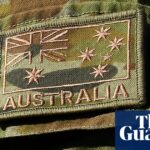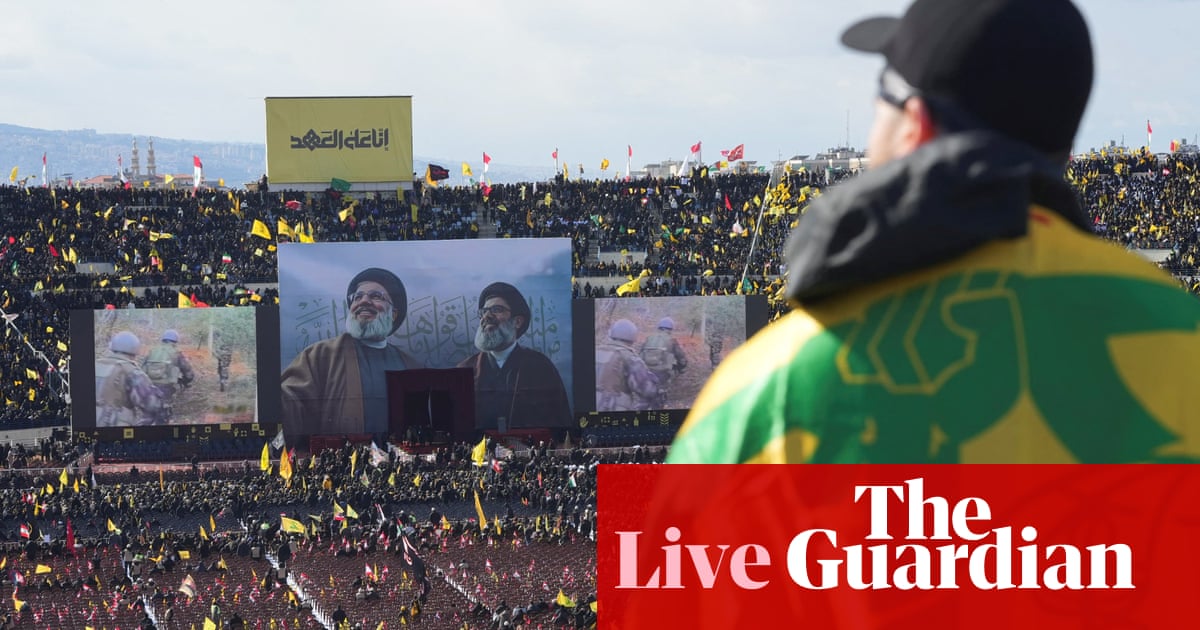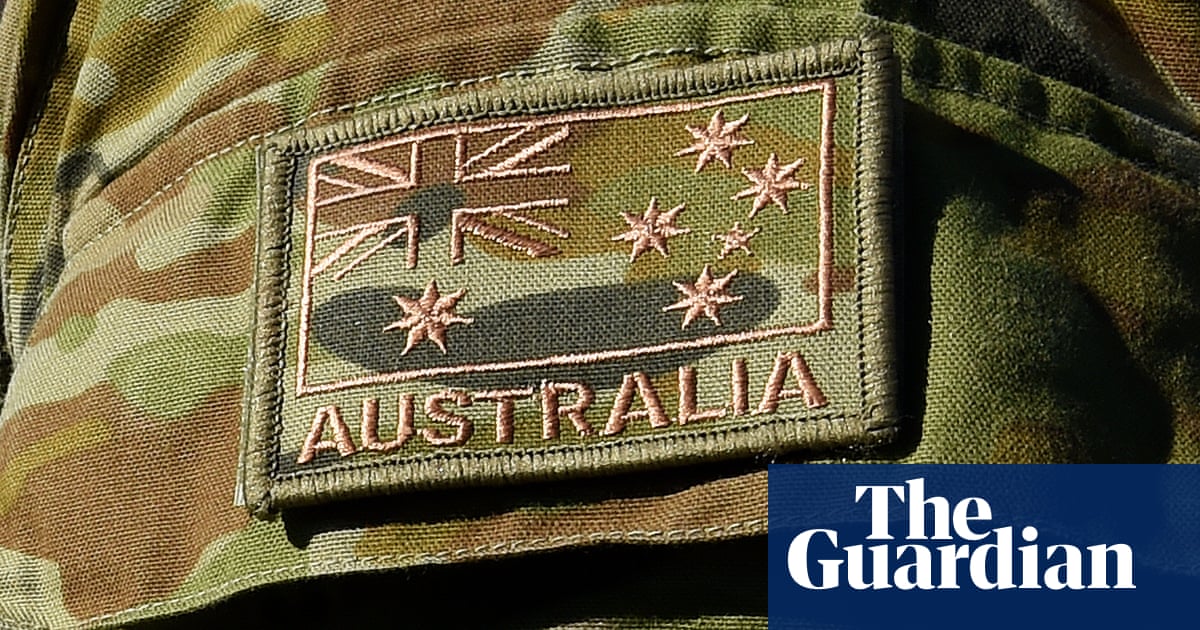IDF strikes south Lebanon as crowds gather in Beirut for Nasrallah funeral
Lebanon’s state-run National News Agency (NNA) reported earlier today that Israeli aircraft launched a series of attacks targeting the outskirts of the towns of al-Qalila and al-Ansar.
The IDF confirmed this morning that it carried out airstrikes in southern Lebanon.
“Several launchers of the terrorist organisation Hezbollah were attacked in the southern Lebanon region, which posed a threat to the citizens of the state of Israel,” the IDF wrote in a post on X.
The NNA later reported that Israeli forces carried out a “raid” on Brissa in the Hermel district of northern Lebanon. There were no immediate reports of any casualties.
Key events
Under interim peace agreements from the early 1990s, Israel maintains control over large parts of the West Bank while the Palestinian Authority administers other areas.
Israel regularly sends troops into Palestinian areas but it typically withdraws them once forces complete their missions.
The UN says the current operation, which started on 21 January 2025, is the longest since the early 2000s.
Palestinian news agency Wafa has the following reports on the Israeli raids on the Tulkarm and Nour Shams refugee camps, as well as the Jenin camp, which is a centre of armed Palestinian resistance to the Israeli occupation:
The Tulkarm refugee camp has seen unprecedented destruction to its infrastructure, with Israeli bulldozers damaging electricity, water, sewage, and communication networks, alongside the demolition of over 14 homes in recent days, especially in the neighborhoods of al-Nadi, al-Shuhada, al-Sawalma, and al-Khadamat, leaving behind a flattened landscape.
In Nour Shams refugee camp, Israeli occupation forces continue their provocative raids throughout several neighbourhoods, which have suffered extensive damage and destruction, particularly in al-Manshiya, al-Shuhada, al-Jami’a and al-Joura. They have been raiding homes, blowing doors, destroying their contents, and terrorising residents. Sounds of gunfire and explosions are being heard frequently…
In the Jenin refugee camp, Israeli forces isolated homes in the western part of the camp yesterday by surrounding them with barbed wire after forcing the residents to evacuate.
The scale of destruction caused by Israeli bulldozers inside the camp’s neighborhoods is becoming evident, with homes and properties destroyed and significant changes to the camp’s landmarks and geography. Dozens of homes have been destroyed by the Israeli army to make room for opening roads for future military use in the camp.
Since the beginning of the aggression, the Israeli occupation has continued to seize several homes, turning them into military outposts, particularly in buildings near or overlooking Jenin camp. Residents of nearby buildings face difficulties entering and exiting their homes due to the constant presence of snipers, putting their lives in danger.
IDF instructed to remain in some West Bank refugee camps ‘for the coming year’
Israel’s defence minister, Israel Katz, said he has instructed the military to prepare to remain in some of the occupied West Bank’s refugee camps “for the coming year”.
“40,000 Palestinians have so far evacuated from the Jenin, Tulkarm and Nur Shams refugee camps, and are now empty of residents. Unrwa activity in the camps has also been stopped.” Katz said, as he claimed the IDF is clearing the “nests of terror” of terrorists and destroying infrastructure and weapons “on an extensive scale”.
“I instructed the IDF to prepare for a long stay in the camps that were cleared, for the coming year, and not allow residents to return and the terror to return and grow,” Katz said.
He added:
We will not return to the reality that was in the past. We will continue to clear refugee camps and other terror centers to dismantle the battalions and terror infrastructure of the extreme Islam that was built, armed, funded and supported by the Iranian evil axis, in an attempt to establish an eastern terror front.
Israel launched its deadly so-called “Iron Wall” raid across the West Bank last month, killing dozens of Palestinian people, forcing tens of thousands to flee their homes, and engaging in the widespread destruction of property and infrastructure.
The UN has expressed concern that the ceasefire in Gaza could be endangered by Israel’s military actions in the occupied West Bank, which have involved what the UN human rights spokesperson labelled “unnecessary or disproportionate use of force”.
Thousands of people have braved the cold weather to reach the site of Hassan Nasrallah’s funeral in a stadium on the outskirts of Beirut. The funeral, which was delayed for security reasons, is due to start at 1:00 pm (1100 GMT).
Khouloud Hamieh, 36, said she came from the east to mourn the former Hezbollah leader she said was “dearest to our souls”.
“The feeling is indescribable, my heart is beating (so fast),” she said. Despite cold weather and large crowds, she said she would not have missed the funeral for anything.
“Even if we had to crawl to get here, we would still come” she said. Hezbollah, the Iranian-backed Lebanese militant group, has long had a support base in the country’s majority Shiite Muslim community by providing social and economic services.
Hezbollah’s current chief, Naim Qasem, who was the former deputy secretary general, called on supporters to attend the funeral at the Camille Chamoun sports city stadium in Beirut as a demonstration of the group’s strength.
Umm Mahdi, 55, said she came “to see him (Nasrallah) one last time and see his shrine… Of course, we feel sadness”.
“This is the least we can do for Sayyed who gave up everything,” she told the Agence France-Presse (AFP) news agency.
IDF strikes south Lebanon as crowds gather in Beirut for Nasrallah funeral
Lebanon’s state-run National News Agency (NNA) reported earlier today that Israeli aircraft launched a series of attacks targeting the outskirts of the towns of al-Qalila and al-Ansar.
The IDF confirmed this morning that it carried out airstrikes in southern Lebanon.
“Several launchers of the terrorist organisation Hezbollah were attacked in the southern Lebanon region, which posed a threat to the citizens of the state of Israel,” the IDF wrote in a post on X.
The NNA later reported that Israeli forces carried out a “raid” on Brissa in the Hermel district of northern Lebanon. There were no immediate reports of any casualties.
As we mentioned in the opening summary, Hassan Nasrallah, who led Hezbollah for more than three decades, was killed last September by Israel in a series of airstrikes on the group’s underground headquarters in Dahieh, a southern suburb of Beirut.
The Guardian’s international security correspondent, Jason Burke, has this profile on Nasrallah, who, prior to his death, had not been seen in public for years because of fears of being assassinated by Israel. Here is an extract from the piece:
A qualified Islamic scholar, effective public speaker and competent organiser, Nasrallah gained leadership experience during the long battle against Israeli troops and their local auxiliaries in the south of Lebanon. In 1992, he was chosen as the movement’s new secretary-general after Israel assassinated his predecessor, Abbas al-Musawi. Months later, Iran used Hezbollah networks and operatives to execute a massive bombing of the Israeli embassy in Argentina, killing 29.
In 2000, Israel’s humiliating and chaotic withdrawal from Lebanon’s south brought Hezbollah and Nasrallah acclaim in the Middle East and broader Islamic world, despite historic sectarian animosity between majority Sunnis Muslims and the minority Shia. The victory came at personal cost to Nasrallah: a son was killed in a clash with Israeli troops.
Six years later, Nasrallah led Hezbollah into a new confrontation with Israel, when he ordered an attack across the contested border that killed eight Israeli soldiers and captured two. This war was less conclusive, and Nasrallah turned his attention to a more political strategy, emphasising his movement’s Lebanese nationalist credentials and building a portfolio of businesses, many illicit.
Thousands set to attend funeral of late Hezbollah leader Hassan Nasrallah
Hello and welcome to the Guardian’s live coverage of developments in the Middle East. It’s just after 10.20am in Gaza City and Tel Aviv – here’s the latest news.
Tens of thousands of people gathered in Beirut this morning to attend the funeral of Hezbollah’s former leader nearly five months after he was killed in an Israeli airstrike on a southern suburb of the Lebanese capital.
Hassan Nasrallah was killed when Israel’s air force dropped more than 80 bombs on the militant group’s main operations room. His death was a major blow for the Iran-backed group that the late leader transformed into a potent force in the Middle East.
Officials from around the region including Iran’s parliament speaker Mohammad Bagher Qalibaf and foreign minister Abbas Araghchi were expected to attend the funeral, believed to be Lebanon’s largest in two decades. The funeral is due to start at 1:00 pm (1100 GMT).
Nasrallah will be laid to rest later on Sunday in Beirut while his cousin and successor Hashem Safieddine, who was killed in an Israeli airstrike on a Beirut suburb a few days later, will be laid to rest in his hometown in southern Lebanon.
Meanwhile, Hamas released six Israeli hostages on Saturday, but Israel suspended the handover of more than 600 Palestinians it was due to free from its prisons in exchange, putting the five-week-old ceasefire agreement once more in jeopardy.
In a statement on Sunday, the Israeli prime minister, Benjamin Netanyahu, said: “In light of Hamas’ repeated violations – including the disgraceful ceremonies that dishonour our hostages and the cynical use of hostages for propaganda – it has been decided to delay the release of terrorists that was planned for yesterday [Saturday] until the release of the next hostages is ensured, without the humiliating ceremonies.”
In response, Ezzat El Rashq, a member of the Hamas political bureau, said Israel’s claim that the hostages’ handover ceremonies are “humiliating” was false and a pretext to evade Israel’s obligations under the Gaza ceasefire agreement.
“Netanyahu’s decision reflects a deliberate attempt to disrupt the agreement, represents a clear violation of its terms, and shows the occupation’s lack of reliability in implementing its obligations,” he said in a statement.
In other developments:
-
Earlier, Hamas released six hostages in Gaza. Tal Shoham and Avera Mengistu were handed over to officials from the International Committee of the Red Cross (ICRC) on stage in the southern Gaza city of Rafah. Later, Eliya Cohen, Omer Shem Tov and Omer Wenkert were released in Nuseirat in central Gaza. In the afternoon, Hisham al-Sayed, was transferred to the Red Cross without a ceremony and then crossed into Israeli territory. Mengistu and al-Sayed had been held by Hamas since they entered Gaza separately under unexplained circumstances about a decade ago. The family of al-Sayed described his return on Saturday as a “long-awaited moment”.
-
Hamas has called the delay of the prisoners’ release “a blatant violation” of the ceasefire. “The [Israeli] occupation’s failure to comply with the release of the seventh batch of prisoners in the exchange deal at the agreed-upon time constitutes a blatant violation of the agreement,” Hamas spokesperson Abdel Latif al-Qanou said, accusing Benjamin Netanyahu of “procrastination and stalling tactics”.
-
The body of the Israeli hostage Shiri Bibas has been identified, after the remains initially returned were found to belong to someone else. Hamas said Shiri’s body had been “mistakenly mixed” with others who were killed and buried under rubble in Gaza.
-
The director of the National Institute of Forensic Medicine in Israel, Dr Chen Kugel, has said there is no evidence Shiri Bibas’ fatal injuries were caused by bombing. Hamas maintains she was killed in an Israeli airstrike.
-
Hamas said on Saturday it was ready to move to the second phase of the Gaza ceasefire deal and to carry out a comprehensive hostage-prisoner exchange to achieve a permanent ceasefire and complete withdrawal of Israeli forces. The comments were made before reports that Israel would be delaying the release of more than 600 Palestinian prisoners and detainees.
-
A third mass polio vaccination campaign began in Gaza on Saturday, Agence France-Presse (AFP) journalists reported, with the aim of delivering the first dose to nearly 600,000 children across the Palestinian territory. Scores of children under the age of 10 received the dose at a mosque in Jabalia, northern Gaza. The vaccination campaign involves multiple UN agencies, including the Israeli-boycotted Unrwa.
-
British doctors who worked in Gaza during the war have issued dire predictions over the long-term health of Palestinian civilians, warning that large numbers of people will continue to die. The prevalence of infectious disease and multiple health problems linked to malnutrition, alongside the destruction of hospitals and killing of medical experts, meant mortality rates among Palestinians in Gaza would remain high after the cessation of Israeli shelling.










